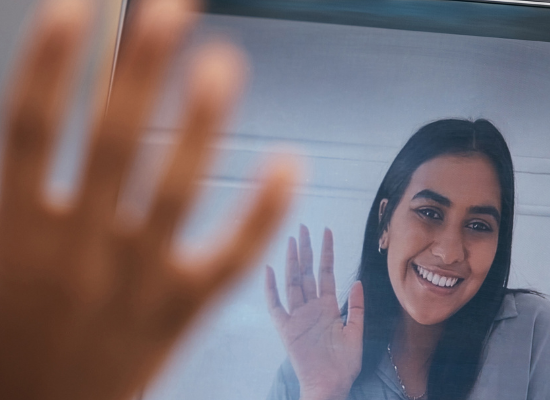
Stephanie Hepburn is a writer in New Orleans. She is the editor in chief of #CrisisTalk. You can reach her at .
East Tennessee Children’s Hospital had its largest spike in behavioral health visits in May 2023. “We kept seeing an increase,” said Ron Phillips, chief nursing officer at East Tennessee Children’s Hospital, adding that young people are struggling nationwide. “No matter what we did, it just didn’t seem like enough.”
The children’s hospital often sees spikes during school finals, Valentine’s Day and prom. “We can look at school schedules and see when those will happen.” In 2023, Children’s Hospital had an influx of younger children, third and fourth graders, who came into the emergency room because of anxiety around the Tennessee Comprehensive Assessment Program tests. Many were told they wouldn’t move on to the next grade if they failed the test.
“There was a lot of, ‘I can’t do this and I’m not good enough,’” said Phillips. “Society places so much pressure on our children that it’s hard for them to adapt as quickly as we want them to. They’re still children. They’re not little adults. They’re children.”
According to a report published last year in the Journal of the American Medical Association, mental-health related emergency room visits by young people — children, adolescents, and young adults — rose significantly from 2011 to 2020. These visits increased from 4.8 million to 7.5 million, respectively, going from 7.7 percent of all pediatric emergency room visits to 13.1.
East Tennessee Children’s Hospital partners with the McNabb Center, a nonprofit that provides mental health, substance use, social and victim services, to divert young people from hospitalization. Initially, the center’s psychiatrists provided emergency room consultations by phone, funded by a Trinity Health Foundation grant. Today, McNabb psychiatrists do in-person consultations on the emergency room floor every afternoon.
Right before Covid, the grant added telehealth assessments for the hospital’s 13 outpatient primary care offices. “We did that to provide telemedicine from the pediatrician’s offices directly to McNabb,” said Phillips. The system was up and running before pandemic lockdown, making the transition to child and adolescent telehealth far easier in East Tennessee than in many other communities.
Even so, the number of kids coming into the pediatric emergency room in mental health distress kept rising. The hospital was ill-equipped to handle the influx. “We are a pediatric hospital, not a mental health provider,” said Phillips, adding that behavioral health visits increased from 588 in 2016 to 1,597 in 2023.
Together with McNabb, the hospital applied for a state grant for a children’s crisis stabilization unit at Children’s Hospital. The grant also included a family walk-in center, not on the hospital’s campus. In 2021, SAMHSA awarded the McNabb Center a $5 million grant to expand the pediatric crisis continuum, including funding for the crisis stabilization unit.
Phillips said the priority was to open the walk-in center first, adding that the center has made a tremendous impact. “We used to see a significant influx of behavioral issues at the end of the school day, between 2:30 and 4:30 pm — teachers, parents, or social workers who felt the child needed to go somewhere.”
The walk-in center has served more than 1,819 patients, stabilizing 87 percent of them, many of whom, said Phillips, would have otherwise ended up in his emergency room. “Even though we’re still seeing a large number of kids in the ED, it’s far less than if the walk-in center didn’t exist.” Referrals mostly come from schools, McNabb’s mobile crisis unit and Children’s Hospital.
The next step was to build the crisis stabilization unit on the hospital’s fourth floor, which opened on May 19, 2022. “Crisis stabilization units aren’t uncommon for adults — they are, however, uncommon for kids,” he said. McNabb leases a hospital wing from the hospital but the partnership goes far beyond sharing space. “We can transfer patients, discharge them from the ED, and send them straight upstairs to the CSU.” The family walk-in clinic and Children’s Hospital’s emergency room make up most referrals to the unit.
In April 2023, Gov. Bill Lee announced a proposed amended budget for fiscal year 2024, which included funding for children’s mental health crisis stabilization units and helping children’s hospitals develop behavioral health infrastructure. The budget also earmarked funding to expand school-based behavioral health liaisons.
“There are plans for two more CSUs — McNabb and I are working with them to share what works, what doesn’t and what the floor plan looks like,” said Phillips, adding that in the middle of a pediatric hospital, there must be a “true behavioral health section run by somebody else.”
The long-standing partnership between the hospital and McNabb created a solid foundation to address co-location details like medication, cleaning contracts and food. “Each state’s regulations often dictate medication storage,” he said, adding that medication storage at the crisis stabilization unit is much like on a regular hospital floor. The unit is also directly connected to the hospital’s switchboard in the event of an emergency, and a single embedded landline allows unit staff to reach the hospital immediately.
“We have an emergency room right downstairs, so it’s easy for them to call and get an emergency response team,” he said. “Our nursing coordinator will direct who comes back and who doesn’t because not all staff have access to the CSU.” Hospital security also makes rounds on the floor.
Determining who stays in the emergency room and who goes to the crisis stabilization unit was more challenging. “We’d never done this before,” said Phillips. In retrospect, he believes it would have been helpful for the partners to sit down and review case studies. “That would have helped us know who is a candidate and given both parties a good idea of what to expect when the CSU opened.”
Open communication has been vital, ensuring that both McNabb and pediatricians share with parents that any child entering the Children’s Hospital emergency room must have medical clearance. “That’s a federal regulation,” he said. The partners also work on communicating with the public that walking into the family walk-in center is much easier than the emergency room.
He shares recent feedback from a Children’s Hospital pediatrician who called the walk-in center at 7:45 pm about a child he wanted to send over. The center closes at 8 pm. The center’s staff said, “Bring them. We will not close.” “We are blessed to have a partner as willing as McNabb to meet the mental health needs of our children in the community,” said Phillips.
Children’s Hospital continues to develop partnerships between its pediatricians and mental health providers. Phillips said the hospital just received a $4 million grant from the state to embed therapists in their pediatric primary care offices. “For a pediatric hospital, we continue to be very fortunate to have a CEO who understands we must keep looking at behavioral health — we have to take care of the entire child.”









